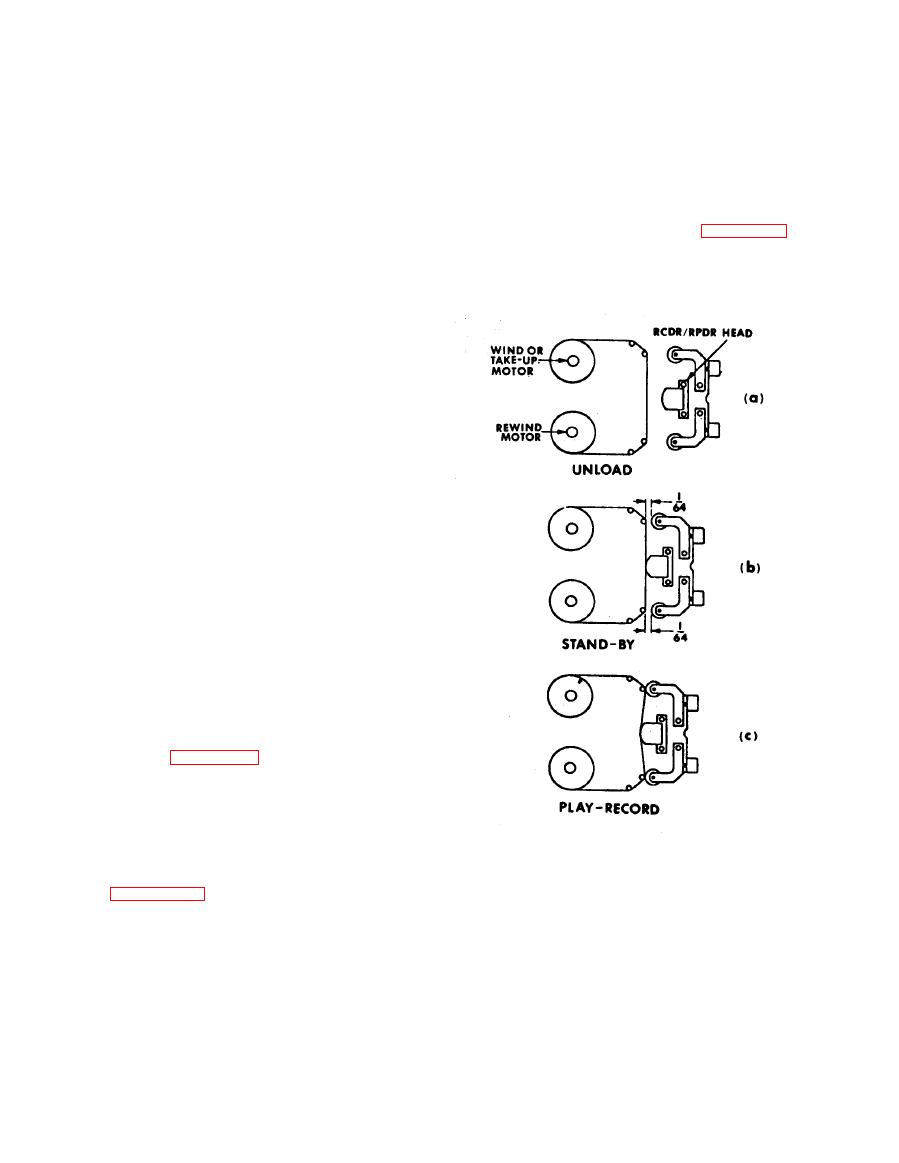
TM 32-5835-005-14 & P
(2) If either the RECORD and/or REPRO-
d. Tape Drive System. The purpose of
DUCE pushbuttons are pressed, both the
a recorder is to make a record on tape
brake-solenoid (A2L2) and the latch sol-
of signal data which may be recovered in
enoid (A2L1) are activated, releasing
its original form at a later date. This
the brakes, bringing the tape into firm
is accomplished by moving a magnetic
contact with the head.
(See Figure 6-3.
tape past a record head. The input
(c). The pinch rollers are engaged,
data signal changes the magnetic field
initiating controlled tape motion.
generated by the head, which in turn
changes the magnetic flux of the iron
oxide particles on the tape in accord-
ance with the applied signal. Data
is then reproduced by moving the mag-
netized tape past a reproduce head to
induce a voltage in head windings
equivalent to changes in flux. Since,
in analog recording, the data signal
is a function of the time and amplitude
of the magnetic field, it is essential
that the tape be moved past the repro-
duce head at the same rate it was moved
past the record head originally. There-
fore, the primary function of the tape
drive system is to move the magnetic
tape in a smooth and uniform manner
past the record and reproduce heads
to preserve the fidelity of the data
signals with regard to time. This
is accomplished by a dual capstan drive
system when the unit is operated in
the record or reproduce mode. In the
fast modes (F/F and F/R) the tape is
moved by the reel drive system only and
speed may be varied.
e. Head Contact. The relative pos-
ition of tape to head contact, illus-
trated in Figure 6-3. (a) occurs when
the CASSETTE MODE KNOB is in the UNLOAD-
LOAD position. Rotating the CASSETTE
MODE KNOB to the STANDBY position re-
sults in the following:
(1) The head is brought into slight
FIGURE 6-3
contact with the tape, but the pinch
(HEAD CONTACT)
rollers are not engaged as illustrated
in Figure 6-3. (b). This position is
maintained during fast forward and fast
rewind modes of operation, permitting
rapid signal location, or in the STOP
mode, awaiting fictional commands.



 Previous Page
Previous Page
